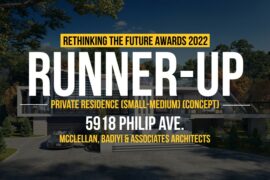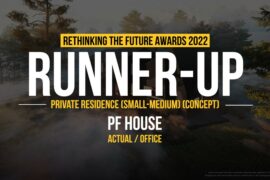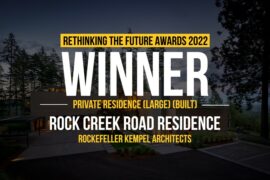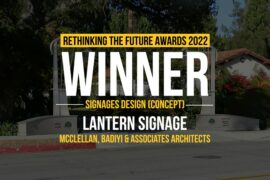The concept echoes a deep understanding of centuries of traditional ‘Konkan’ construction techniques albeit interpreted in a contemporary syntax. The site is deeply forested and we knew that we wanted to achieve the final product with a minimum impact on the existing flora, without disturbing nature’s equilibrium.
Project: Residence at Alibaug
Location: Sasavne, Alibaug.
Client: Confidential
Architect: MALIK Architecture
Design team: Kamal Malik, Amit Modi, Sunil Gavane, Rucha Pimprikar, Ketan Chaudhary
Site Area: 2.15 acre (+0.15 acre)
Project Area: 22,380 sq. ft.
Civil Contractors: Unique Construction Technologies
Structural Engineers: Strudcom
Consultants: Structural Engineer – Strudcom
Plumbing Consultant – Suhas Gangan
Rain Water Harvesting– Mungekar and Associates
Landscape Consultant— Design Consultans, Taera Chowna
Contractors: Structure and Civil – Unique Construction Technologies
Glazing – Unique Construction Technologies
Cladding – Vijaynath interior and exteriors pvt.ltd., Mumbai.
HVAC – Cool Air Systems
Plumbing and Firefighting – Khodiyar
Electrical – Parth Electricals
Pools / Water Bodies – Silver Pools
Site Supervision: Unique Construction Technologies
Model-maker: N.A.
Project Estimate: Confidential
Initiation of Project: 2009
Completion of project:2013
Photo Credits: Bharath Ramamrutham
In fact the very concept was determined by the site itself. We were simply, the catalysts. The next step was to ‘connect’ the scattered components of the house. This too had to be achieved with minimum impact on the existing flora. Finally, the client’s requirement of an integrated net-work of water bodies / channels was over-laid on the generated matrix. This process of layering ensured at every step that we never, or at best absolutely minimally, intruded on to a forested site and yet managed to introduce a large house, ‘connected’ multiple water bodies and channels and a hierarchy of traditional Indian spaces from the formal to the private (through a series of courts).

To further reduce the foot-print on the site we built using 4 main materials, (3 of which have been used in the region for centuries viz. Stone, Wood and Clay Tile) and the 4th – fly-ash blocks which are produced locally. Low emission LED fixtures have been used for lighting the site, which allows minimum electrical consumption.
Based on our experience of working in this region we employed the use of ‘cavity’ block walls and stone for the load bearing elements and for the super-structure we used wood and clay tile.
Our real challenge in as far as the structure was concerned was to use the traditional materials / techniques and yet evolve an exhilarating and contemporary syntax.

This was achieved by introducing a composite structural technology using thin steel plates sandwiched with wood planks. This opened up a fascinating window of achieving larger spans (yet using slender sections of wood) and also afforded us the ability to pick up the roof loads through numerous iterations and articulations. Considerable usage of wood therefore has also been reduced.
Care was taken to ensure natural light and ventilation in each area of the house. The detail of fenestrations included introduction of Louvers / meshes / gasket seals to prevent insects / snakes from entering.

Relatively recent inductions into a way of life like the Gym, Spa and the Den / Home theatre have been segregated and separated using contemporary forms and introducing natural materials like Zinc.
In sharp contrast to traditional architecture, the articulation for these forms is derived from extruded aluminum sections. These prisms, almost sculpture-like are perched on either side of the water body which dominates the northern face of the site.
The concept of the Hamam has been derived from the stepped wells and Turkish baths. Circular openings in the slab allow natural day light to enter the Hamam and reflect in the Pool. The sickaklik or hararet in a Turkish bath was traditionally provided with small glass windows in its domed ceiling to create half-light.

A straight flight of steps inspired by the steeped wells from Gujarat; leads one to the subterranean Hamam. The Hamam thus echoes two distinct architectural features. Over the slab of the Hamam a reflecting water body mirrors the pool below, also providing thermal insulation.
There are two ring wells constructed on site. A single ring well near the main entrance and a multi ring well near the Kitchen. Storm water drains along the length of the compound wall (internally and externally proposed), roof drains from every building unit and surface drain charge the multi ring wells. In addition to this 20 short bores allow water to seep into the ground and charge the ring wells.
Sweet water column at site is 6 to 6.5 metres below the ground level. Sweet and salty water have different densities; sweet water is lighter and hence will float over salty water. By doing water harvesting the ground water table in the surrounding area is increased with sweet water.” Solution to pollution is dilution” is the concept executed for water harvesting.

Water collected in both these well is pumped to the main water tank for treatment and used for landscape and domestic use. The total yield of water is estimated up to 34500 liters per day.
The Site is thickly forested as such ‘Bald’ spots were selected for construction; which afforded minimum re-location or cutting of trees , in addition site levels were maintained to avoid losing top soil and flow of water through gravity.
An elaborate water harvesting scheme has been executed on site.
The Landscape scheme involves planting local plants; ensuring minimum consumption of water.
Construction has been carried out using fly-ash cavity walls, wood and mangalore tiles. All flooring has been done using natural local stones. As the site is thickly wooded solar power study determined very little benefit from solar source.

Natural ventilation and lighting reduced solar load. Water bodies are used for leisure as well as cooling.
Deeply shaded verandas and semi-outdoor spaces, repeated throughout the design balance indoor and outdoor spaces.
Next Post
GMS Grande Palladium by Malik Architecture
3 Mins Read





